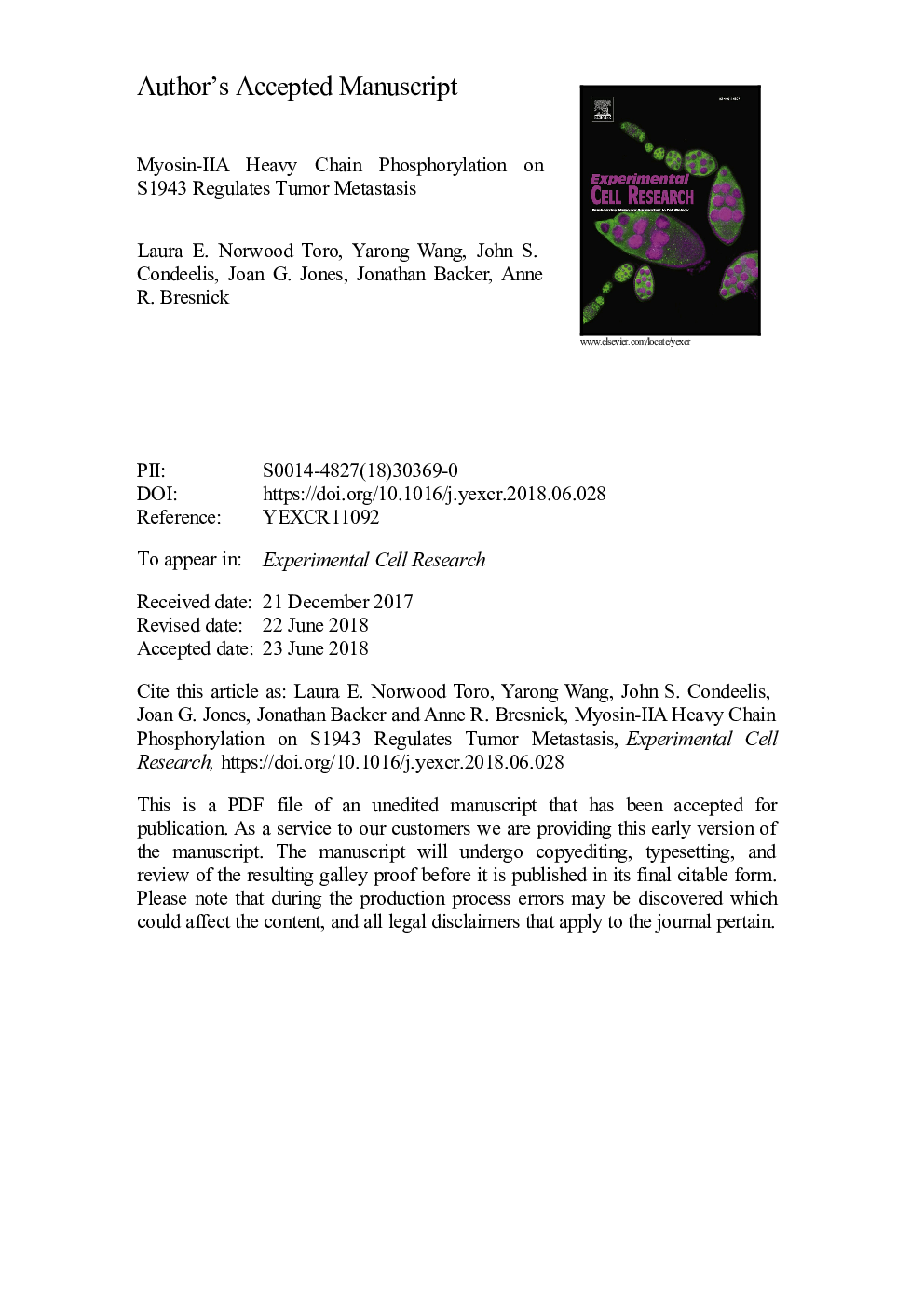| Article ID | Journal | Published Year | Pages | File Type |
|---|---|---|---|---|
| 8949694 | Experimental Cell Research | 2018 | 35 Pages |
Abstract
Nonmuscle myosin-IIA (NMHC-IIA) heavy chain phosphorylation has gained recognition as an important feature of myosin-II regulation. In previous work, we showed that phosphorylation on S1943 promotes myosin-IIA filament disassembly in vitro and enhances EGF-stimulated lamellipod extension of breast tumor cells. However, the contribution of NMHC-IIA S1943 phosphorylation to the modulation of invasive cellular behavior and metastasis has not been examined. Stable expression of phosphomimetic (S1943E) or non-phosphorylatable (S1943A) NMHC-IIA in breast cancer cells revealed that S1943 phosphorylation enhances invadopodia function, and is critical for matrix degradation in vitro and experimental metastasis in vivo. These studies demonstrate a novel link between NMHC-IIA S1943 phosphorylation, the regulation of extracellular matrix degradation and tumor cell invasion and metastasis.
Keywords
Related Topics
Life Sciences
Biochemistry, Genetics and Molecular Biology
Cancer Research
Authors
Laura E. Norwood Toro, Yarong Wang, John S. Condeelis, Joan G. Jones, Jonathan M. Backer, Anne R. Bresnick,
